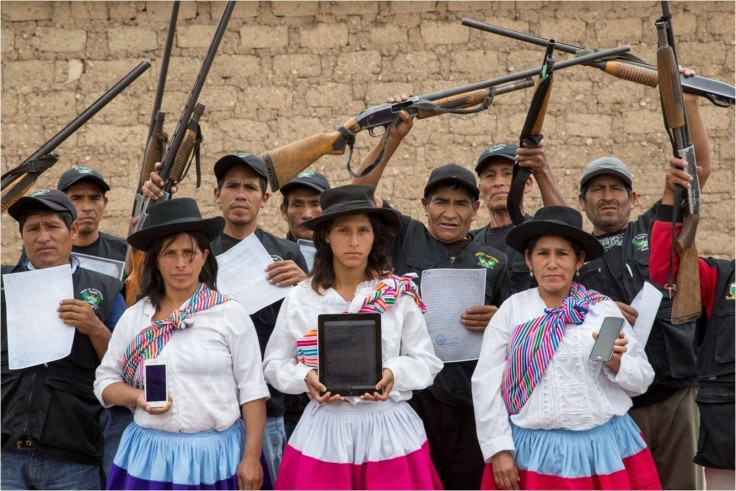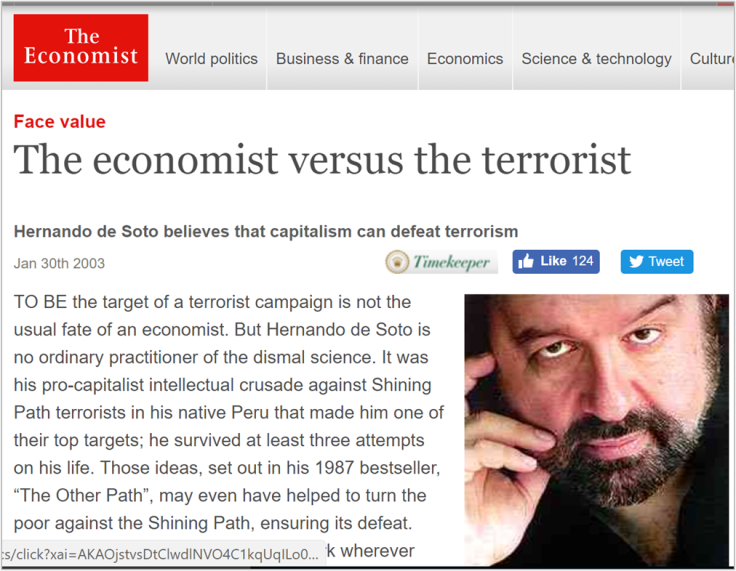Hernando de Soto and Patrick Byrne's mission to put the developing world's property rights on a blockchain
Byrne is a blockchain evangelist extraordinaire and De Soto is one of the most influential economists of all time.

It sounds like a legend in the making. One that will be immortalised using the digital permanence of blockchain, the technology born out of Bitcoin. The famous economist Hernando de Soto and the visionary entrepreneur Patrick Byrne have made a commitment to formalise the property rights of some five billion financially excluded people around the world. These people will be granted access to the global system of capital thanks to immutable and transferable property rights on a purpose built blockchain platform.
De Soto is one of the most influential economists of all time, and according to Bill Clinton he is the most important in the world today. Byrne has often gone against the grain and followed his singular vision through boom, bust and technology revolution – and has been proved correct time and again.
De Soto's expertise, both theoretical and practical, around the way property rights can unleash economic power among financially subjugated people is vast. Aside from alleviating poverty, he showed how granting strong property rights to people living in the countryside in Peru countered the dominance of the militant communist group Shining Path in that region. He has also been influential in promoting this thesis as a way to resist terrorist groups like Isis.
His painstaking work (leaflets were distributed to the entire country) kick-started an economic miracle in Peru: people stopped operating in black-markets and started paying more tax, hundreds of thousands of new businesses appeared and GDP rocketed.
Over the past 25 years, de Soto has marshalled an army of researchers who have examined property rights in every corner of the world, from cattle ownership in Tanzania to mining associations in Latin America; charting ownership claims in the former Soviet Union to the mountains of Afghanistan.
What you find is that people have already done their best to create informal ledgers. However, getting these recognised by a government and incorporated into rule of law can take generations and involve ploughing through acres of bureaucracy and corrupt officialdom in many cases.
In famous works like "The Mystery of Capital", de Soto showed that connecting excluded people to information and legal frameworks means they can combine and partition their holdings into valuable wholes. They can then pledge their holdings against investment and credit, and use them as credentials for civic purposes and to access public services.
This is not an easy thing to do, but today powerful technologies can be put to use. De Soto explains the next phase of his work in terms of an "Uberisation" of the entire bureaucratic mess of feudal laws found in the developing world and former-Soviet Union.
He said: "We know where the weak spots are. It's not even a self-interested oligarchy or elite you are taking on; you are basically taking on bad habits.
"People are accustomed to owing things and running things as certain way. Like with Uber, you must find all those people who do not have a recorded title and reach them directly. Not only do you allow them to defend their assets, but also to use these as guarantees, to use them as tokens for investment, to use them to identify themselves, to use them as a means for corporate organisation.
"You find out after a while that it is about two thirds of the economy. Often they actually have their own ledgers, so in other words you don't have to go and title them. They already have titles that are simply not connected within the country. What we have is a digital shortcut right to the law and to bring them in directly using information."

De Soto is not some blockchain newbie; he has been involved in on-chain property rights since early 2015. He recently put his name to a land rights project involving the Republic of Georgia, and is well aware of other valiant blockchain projects looking into land rights, such as Factom. The latter issued a "humble update" on its Honduras land project having hit slow moving government systems and political bureaucracy.
But what the de Soto project is doing is radically different from other land title blockchains, which are basically just re-writing existing records in digital format, he says.
"They apply blockchain administration to the existing records. They do not go out and get the records that are out in the market that are not integrated. They organise them in a blockchain and it's more efficient and modern. We don't only do that; we go out and take the registries that we call informal, and we bring them in.
"We are like Uber in that sense – as opposed to entering the maze of the yellow cab medallions, let's say, meeting the mafias and trying to find a way of re-regulating one way or another and all that bureaucratic resistance."
De Soto's exhaustive human mapping used to happen in little villages, 2000 people at a time. He is now prepared for digital scaling and network effects. Not only is he on a first name basis with 35 heads of state around the world, he has millions of followers on social media and wields the power of blockchain.
It's also where Byrne comes in. As well as blockchain at the back-end and social media to promote it, the solution will feature easy and intuitive web apps. Byrne points out that Overstock's web apps have been voted the best on Android and iOS for the past six years running.
Byrne, a blockchain evangelist extraordinaire, says he will now give De Soto Inc (they have not decided on a consumer name for the platform yet) his full focus, describing it as the honour of his life. In order for him to do this, there are two avenues currently being explored.
Byrne said: "I'm either selling the retail business so I can focus on this, or possibly getting a large strategic investment. But it would have to be from someone who is cool owning a third of a company where the CEO is spending the bulk of his time on this project.
"So that's almost more like a going private; if there was a Bain or a KKR, who could help us go private, but then give us the resources. This is going to take some very good people. So some charm and doing a deal with someone like a Bain and being able to have their help in building out this global vision."
Clearly a man on a mission, Byrne added: "We think we have a solution to change the world. Hernando is a young 76, I'm an old 55; we figure we can give each other five years. So we are committing to each other to stay alive for five years and the two of us can change the world for five billion people."






















